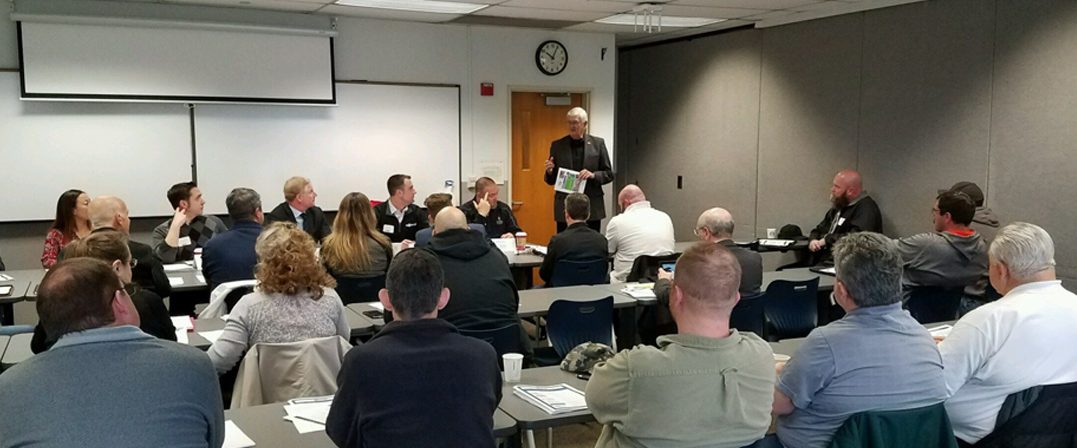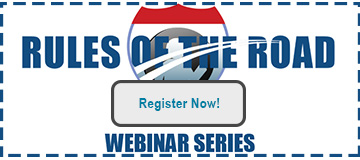
What Carriers Learned at the OTA’s ELD Showcase on March 1st
posted in Alerts by Brian Gray
What Carriers Learned at the OTA’s ELD Showcase on March 1st
The Federal Motor Carrier Safety Administration (FMCSA) is still issuing guidance on their ELD mandate, which takes effect on Dec. 18, 2017. The Oregon Trucking Association offered a free ELD Showcase on Wednesday, March 1st where companies could get an overview of what the mandate means for trucking companies, hear from a panel of ELD providers, and meet with individual providers, one-on-one.
The participating ELD provider companies included: GeoTab (represented by Glostone Trucking Solutions), EROAD, PeopleNet, Zonar, J.J. Keller, and Rand McNally.
Will the ELD Mandate go away?
OTA President Jana Jarvis touched on the new Trump administration and how the ELD may be affected by the president.
“There is this idea that once Trump was elected that these regulations would be overturned. There’s an important distinction I think you need to understand – the discussion that Trump is having about regulations are proposed regulations. The ELD rule has already been, what we call, promulgated, it’s on the books, it’s in force, it’s not up for discussion.”
“Could it be delayed, could there be changes, I am not suggesting that might not be addressed, but, the simple fact is, that this mandate is moving forward. I think the industry itself is working along those lines because for many of us trying to represent our industry and our safety emphasis in this industry, is paramount.”
Jana stressed that the ELD rule is on the books, “You need to think about it seriously today.”
 Interesting questions that came up during the ELD showcase:
Interesting questions that came up during the ELD showcase:
Q: We are a construction company with a specialty in highway construction guard rail installation and replacement. We have a unique situation with some of our units. Our guard rail punches have two power units on it. Our downstairs unit gets turned off but the back power unit moves and drives the vehicle on grade time and could move a mile down the road on the construction site.
How is an ELD going to categorize that and how to solve that situation as not to be an undocumented time?
A: If the vehicle is traveling less than 5 mph, then the driver would be considered “On Duty” and not driving according to the ELD mandate. Therefore, the ELD unit should record the driver as on-duty.
Q: Similarly, what happens if a truck with an ELD unit gets in a ferry, goes down river, and travels five miles downstream and gets off. How will ELDs manage that situation?
A: Noting that the engine of the vehicle will be off, just switch the ELD device to “On Duty” while on the ferry. If there is some error or notation that the “vehicle moved”, a driver should be able to add notation of what happened so if an auditor looks at the logs, the driver simply explains and if it’s true there should be no issue.
If the question is for IFTA purposes and now becomes a distance issue, it’s now in your internal controls to look at the trip, see if miles were accumulated. If so, edit the miles and make a note as to why.
Q: What is involved in the self-certification process for ELDs?
A (Soona Lee of EROAD): Part of the ELD Mandate is unfinished. The electronic record of duty status, which is the system that will receive the ELD records from the ELD vendor system into the compliance platform that will be utilized by the roadside inspector and compliance reviewers has not been completed by the FMCSA.
So one of the test criteria they had to take out for self-certification was regards to that testing: the end to end process where the data is securely sent across, and successfully been completed.
For EROAD, there was a long lead time to get every part of the over 300 test criteria that needs to be satisfied by the developer and be internally tested.
Soona detailed that “In the back end, we must provide a user manual for how system works and how the driver will operate it, what the transferring requirements will be, and what the malfunction codes are.”
The malfunction codes were the hardest to develop: when a malfunction occurs, how the system detects it, and what a driver needs to do to correct it.
“Part 395.34 requires drivers to manage the malfunctions. Many [ELD] systems contain a malfunction list of what can go wrong with the device and [instructions] for drivers on how to resolve it. That is a good show and tell about the quality of the ELD – what types of malfunctions can they identify, and how they are resolved. This list must be visible to the FMCSA,” for the self-certification process.
Soona stressed that there may be specific scenarios to ask the vendors about, such as if working with a mixed fleet are pre-and-post 2000 vehicles, slip-seating or team driving, intrastate one day to interstate the next day, etc.
“How does the system cater to those different scenarios – those are not covered by the FMCSA and is dependent on what solution you obtain, whether they can satisfy those operational challenges as well as meeting the ELD technical questions.”
Q: Are any of the ELD companies partnered with Garmin?
A (Ryan Walsh of Glostone Trucking Solutions/GeoTab):
Ryan stated that GeoTab is parented with Garmin.
“The in-cab mountable Garmin device can connect with the GeoTab unit – simple plug and play – and have access to an ELD interface, DVIR interface, and live real-time routing. We find that fleets doing a lot of intermodal or local traffic will find Garmin’s integration especially useful.”
Q: What about the driver who says they will not stay with a company or get out of trucking if they have to put ELDs in their truck? How do we retain drivers who say they don’t like ELDs?
A: The panel mentioned that there are tremendous benefits to the driver, such as being able to save 15 to 20 minutes per day that is normally consumed managing paper logs.
Another suggestion was to not spring an ELD device on the driver – there should be an implantation plan in place. Identify a core group of ambassador drivers who can sell the ELD device to other drivers. These drivers will be your most effective advocates.
Ryan Walsh of Glostone stated that ELDs can be a great tool for driver development.
“ELDs could be looked at as a tool to help develop better drivers. Some ELDs have driver behavior tracking capabilities, such as hard braking, hard acceleration, idling, etc. So we [at Glostone Trucking Solutions] try to make driver development into a game. These things can be tracked and measured over time to improve and grow driver’s skills and drivers can compete with one another to improve their skills. So sell it as a tool to for professional development.”
If you are searching for the right ELD platform to manage your company’s compliance and fleet performance, give Glostone Trucking Solutions a call at 503-607-1088 or visit our ELD page: https://www.glostone.com/geotab







